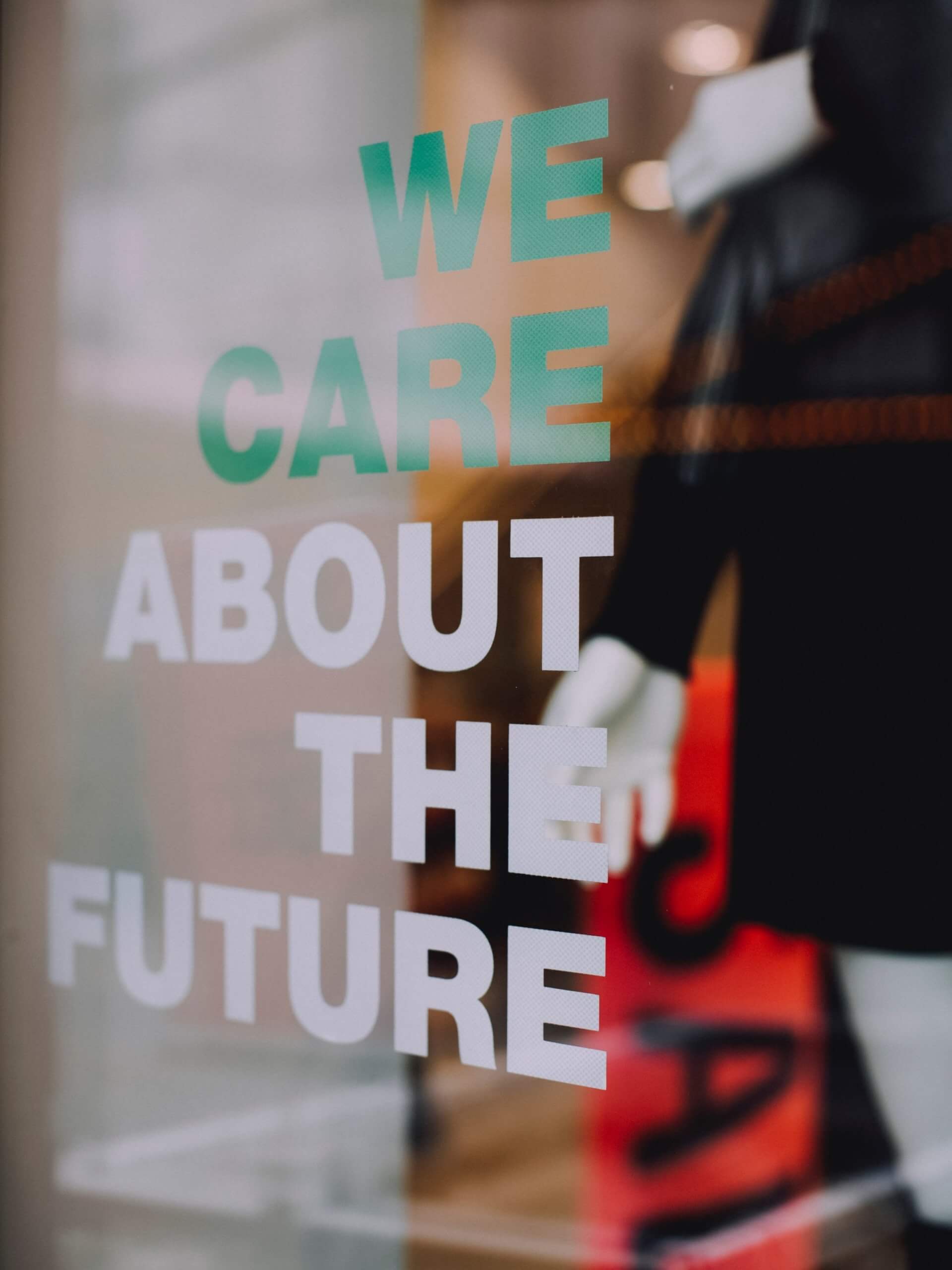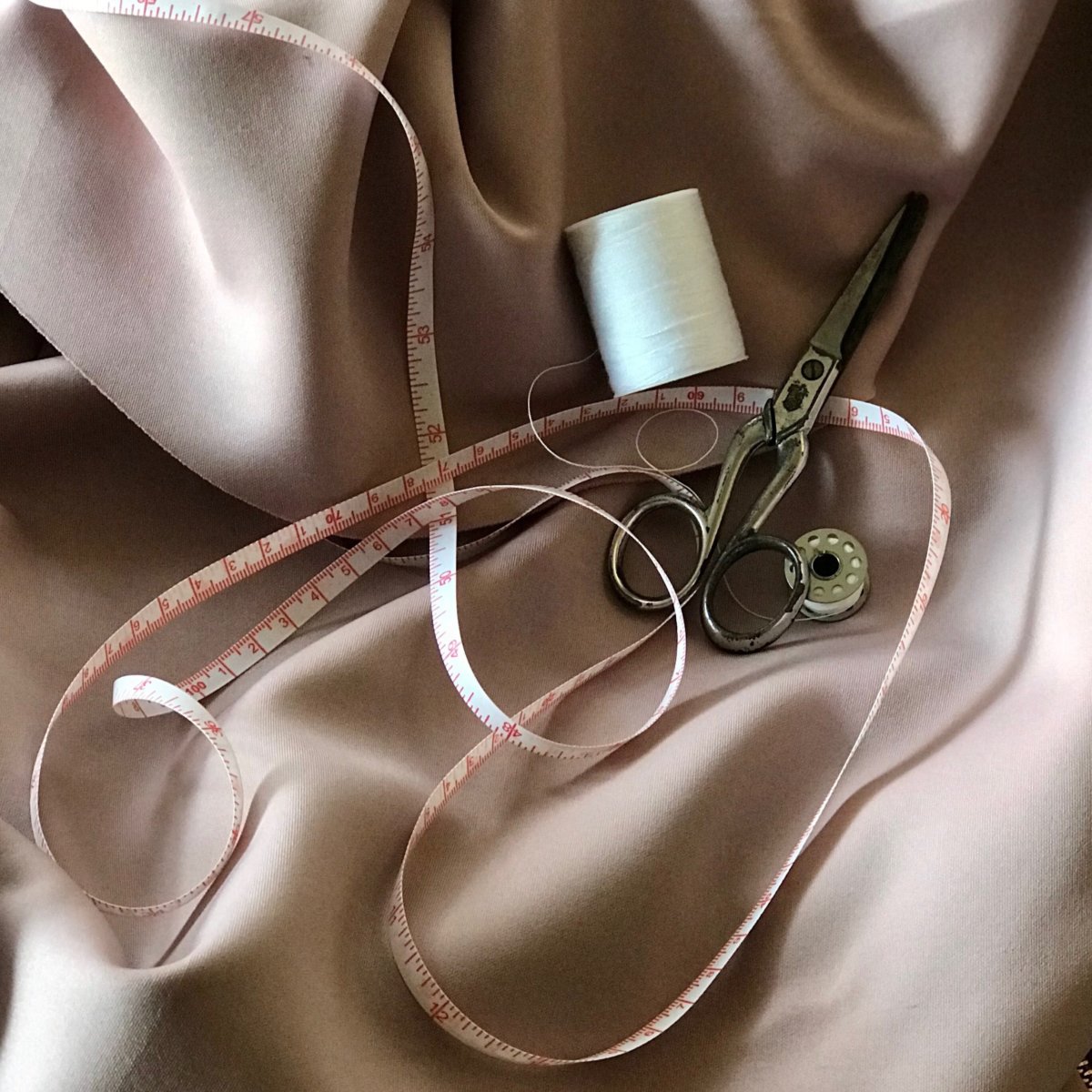
Fast fashion has taken over our wardrobes, our social feeds, and, unfortunately, our landfills. The phobia of wearing the same outfit twice isn’t something new to fashionistas, but it might as well be the end of the world if it happens to be documented on Instagram. Sadly, social media has developed into a toxic culture of ‘throw-away fashion,’ where users often have an internal pressure to find their individual style and change their look for every photo. Not only are we buying more, but we’re also wearing less. As a result, the fashion industry has a newfound pressure to produce more at an unfeasibly fast pace, creating catastrophic levels of waste in the process. The good news is, demand isn’t necessarily as insatiable as brands predicted. The growing awareness surrounding environmental pollution continues is impacting attitudes, causing consumer pushback, and altering purchasing patterns.
Alas, on the opposite side of the spectrum, (re)emerges made-to-measure clothing – a slower, higher-quality alternative to mass retail and off-the-rack production, that not only solves many of the fashion industry’s most glaring pain points, but also some relatively new issues…clothes actually fitting.
Fitting into the Fashion. At least, that used to be the case.
If you’re like most of the population who lack a chiseled model physique, sizing is inconsistent, emotionally draining, and leads many of us to falsely believe that our bodies are the problem. While the fashion industry has made huge steps towards more size-inclusive and sustainable practices, consumers often end up frustrated with the standard sizing system.
Part of the problem is the sizes themselves…All bodies are shaped differently, and simply choosing a numbered size is only going to guarantee constant tugging and readjusting, not necessarily a great fit. The other part of the problem is the inconsistencies in garment sizing among retailers. Producing an infinite number of ready-to-wear clothing is expensive and challenging, so brands adjust their sizes using a fit model which they deem to be representative of their target market. For example, that same size jeans at American Eagle, which targets 15 year olds to 25 year olds, may fit very differently than jeans from Macy’s, whose average shopper is older. While that sounds like it would make sense for businesses, it has been a constant challenge that seems to only confuse, and in some cases infuriate consumers. After all, garments that make shoppers look and feel their best shouldn’t be too much to ask from clothing brands.
Made-To-What?
So many brands have gotten in on the personalization boom over the past couple of years, but technological advances have allowed a new wave of star companies to set themselves apart by not just focusing on an assortment of color options, but rather, fit, and, in some cases, style preferences too. Of course, the concept is nothing new. Custom clothing is an indulgence often associated with celebrities or wealthy individuals far from the mainstream. Reasonably enough, most people assume that all custom garments are out of reach. At least, that used to be the case. Custom everyday clothing items like shirts, jackets, and even jeans can be surprisingly obtainable. Made-to-measure business model emerged nearly a decade ago as a hybrid between the ready-to-wear and bespoke manufacturing processes. Meaning, consumers have the benefit of obtaining personalized products in a relatively quick time frame, without the premium price tag of a bespoke item. In addition to providing inclusive sizing, its sustainability credentials seem to be resonating with eco-conscious shoppers.
Look Good, Feel Good
Trying on clothing is an extremely fundamental part of the purchase-decision process, but when you mix online shopping with botched size guides, it can pose quite a challenge for consumers. One of the by-products of online shopping is that consumers need to sample products at home. To reduce the probability of ordering the wrong size, some shoppers are going as far as buying multiple sizes of the same item with the expectation of returning at least one. As a result, there are higher levels of product returns, and now even higher levels of pollution pushed into the environment due to the additional packaging materials and fuel used to ship and return unwanted products.
Material waste and oversupply are two of the industry’s biggest contributors that impact the environment in a negative way. Made-to-measure clothes minimizes fabric waste, by using materials in limited quantities and maintaining very little inventory at any one time, as well as only producing what has been already purchased. The intimacy of the supply chain allows garments to be produced at a high-quality that will last a lifetime – one in which many wouldn’t mind investing in or waiting weeks for a delivery if it meant it was created with excellent craftsmanship, care, and the perfect fit. When a shopper has a successful experience related to fit, they are much more likely to purchase from that retailer again. With that in mind, no wonder the made-to-measure business model is growing increasingly popular in today’s turbulent retail landscape, it’s an innovative way for brands to stand out, and build loyal customers!
So, What’s the Delay?
One of the main reasons why made-to-measure hasn’t totally taken off with big corporations is simply because it’s not so easy to scale, especially if brands have to rely on outside factories. Mass market customization also requires technology beyond the reach of most businesses. That’s why many made-to-order brands are primarily involved with formalwear, where demand is relatively controlled and alterations usually take place in-house. Obviously, shoppers are going to pay more for a made-for-measure piece than something off the rack. The only realistic way to keep costs down is to manufacture garments with fixed sizes. But hey, if you divide the cost by the number of wears, it can make good financial sense to commission custom pieces in my opinion. I’d rather have one piece that fits just right than several unflattering pieces, anyways.
In no time, made-to-order products will build enough momentum in the direct-to-consumer space, that it will be accessible at a much lower price point. While it’s still too early to determine when exactly we’ll see larger brands adapt to the growing customization trend, inconsistent sizing and dressing-room tears will certainly be a thing of the past. Obviously, any trend that encourages us to appreciate the way clothes are made is something worth waiting for.

Share this Post

